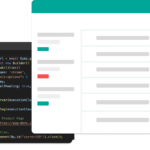Scaling your test automation initiatives can be daunting. In a recent webinar, Test Automation at Scale: Lessons from Top Performing Distributed Teams, panelists from Accenture, Bayer, and Eversana shared their... The post Driving Successful Test Automation at Scale: Key...

Scaling your test automation initiatives can be daunting. In a recent webinar, Test Automation at Scale: Lessons from Top Performing Distributed Teams, panelists from Accenture, Bayer, and Eversana shared their insights for overcoming common challenges. Here are their top recommendations.
Establish clear processes for collaboration.
Daily standups, sprint planning, and retrospectives are essential for enabling communication across distributed teams. �The only way that you can build a quality product that actually satisfies the business requirements is [through] that environment where you�ve got the different teams coming together,� said Ariola Qeleposhi, Test Automation Lead at Accenture.
Choose tools that meet current and future needs.
Consider how tools will integrate and the skills required to use them. While a �one-size-fits-all� approach may seem appealing, it may not suit every team�s needs. Think beyond individual products to the overall solution, advised Anand Bagmar, Senior Solution Architect at Applitools. Each product team should have a test pyramid, and tests should run at multiple levels to get real value from your automation.
Start small and build a proof of concept.
Demonstrate how automation reduces manual effort and finds defects faster to gain leadership buy-in. �Proof of concepts will really help to provide a form of evidence in a way to say that, okay, this is our product, this is how we automate or can potentially automate, and what we actually save from that,� said Qeleposhi.
Consider a �quality strategy� not just a �test strategy.�
Involve all roles like business, product, dev, test, and DevOps. �When you think about it as quality, then the role does not matter,� said Bagmar.
Leverage AI and automation as �seatbelts,� not silver bullets.
They enhance human judgment rather than replace it. �Automation is a lot, at least in this instance, it�s like a seatbelt. You don�t think you�ll need it, but when you need it you better have it,� said Kyle Penniston, Senior Software Developer at Bayer.
Build, buy, and reuse.
Don�t reinvent the wheel. Use open-source tools and existing frameworks. �There will be great resources that you can use. Open-source resources, for example, frameworks that might be there that you can use to quickly get started and build on top of that,� said Bagmar.
Provide learning resources for new team members.
For example, Applitools offers Test Automation University with resources for developing automation skills.
Measure and track metrics to ensure value.
Look at reduced manual testing, faster defect finding, test coverage, and other KPIs. �You need to get some metrics really, and then you need to use that from an automation side of things,� said Qeleposhi.
The key to building a solid foundation for scaling test automation is taking an iterative, collaborative approach focused on delivering value and enhancing quality. With the right strategies and tools in place, teams can overcome common challenges and achieve automation success. Watch the full recording.
The post Driving Successful Test Automation at Scale: Key Insights appeared first on Automated Visual Testing | Applitools.










